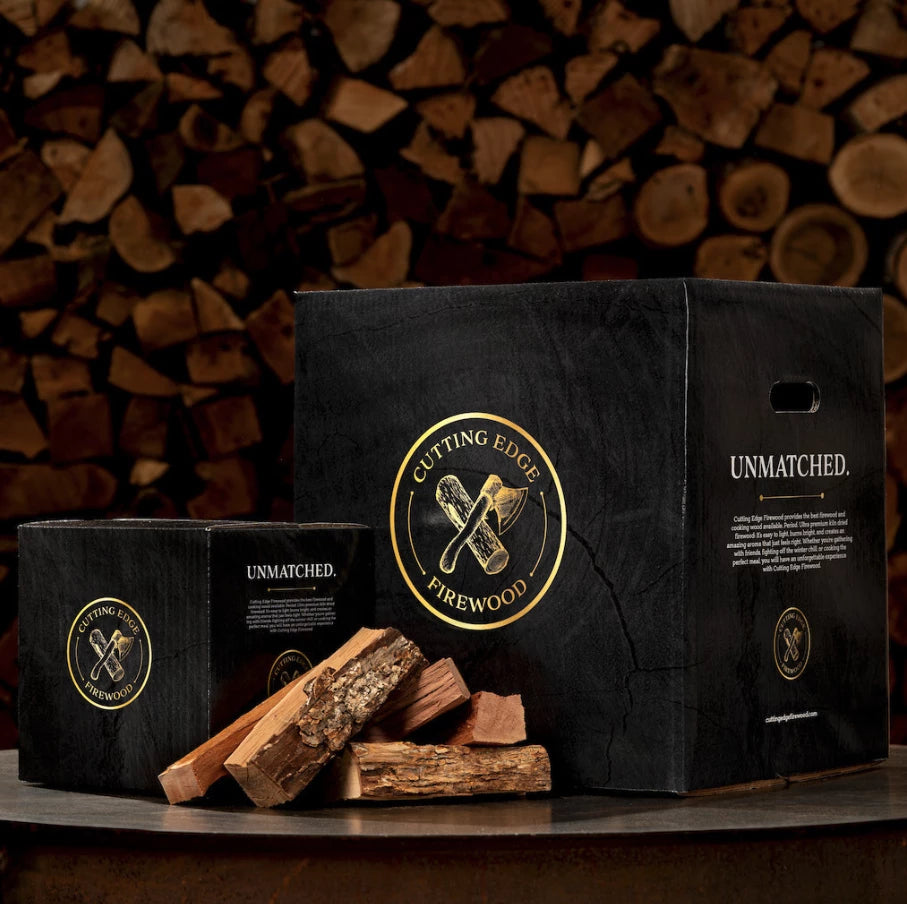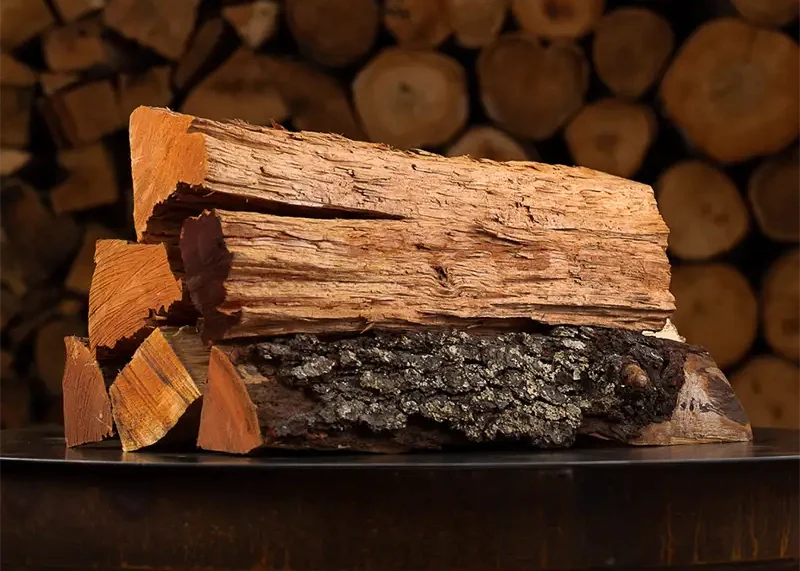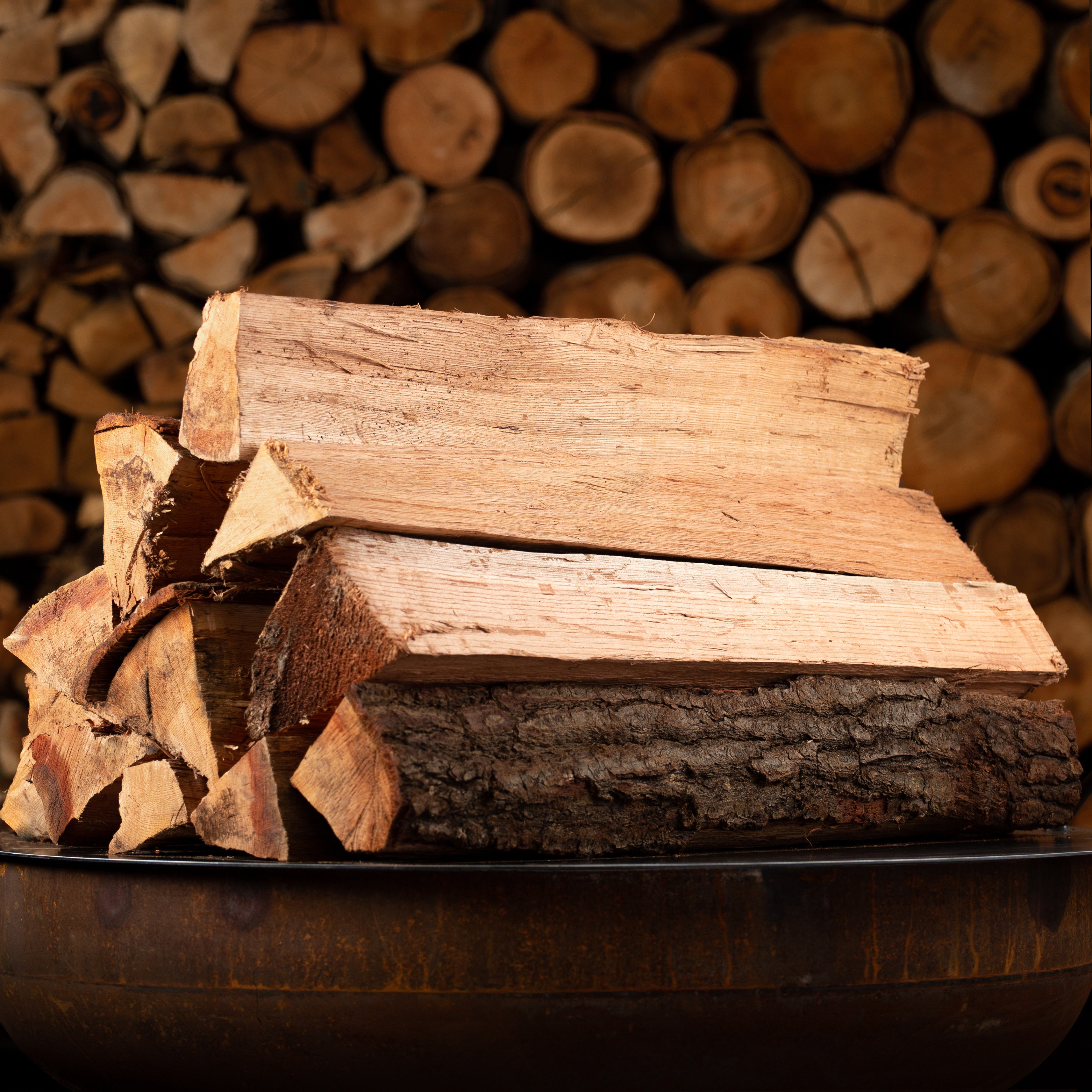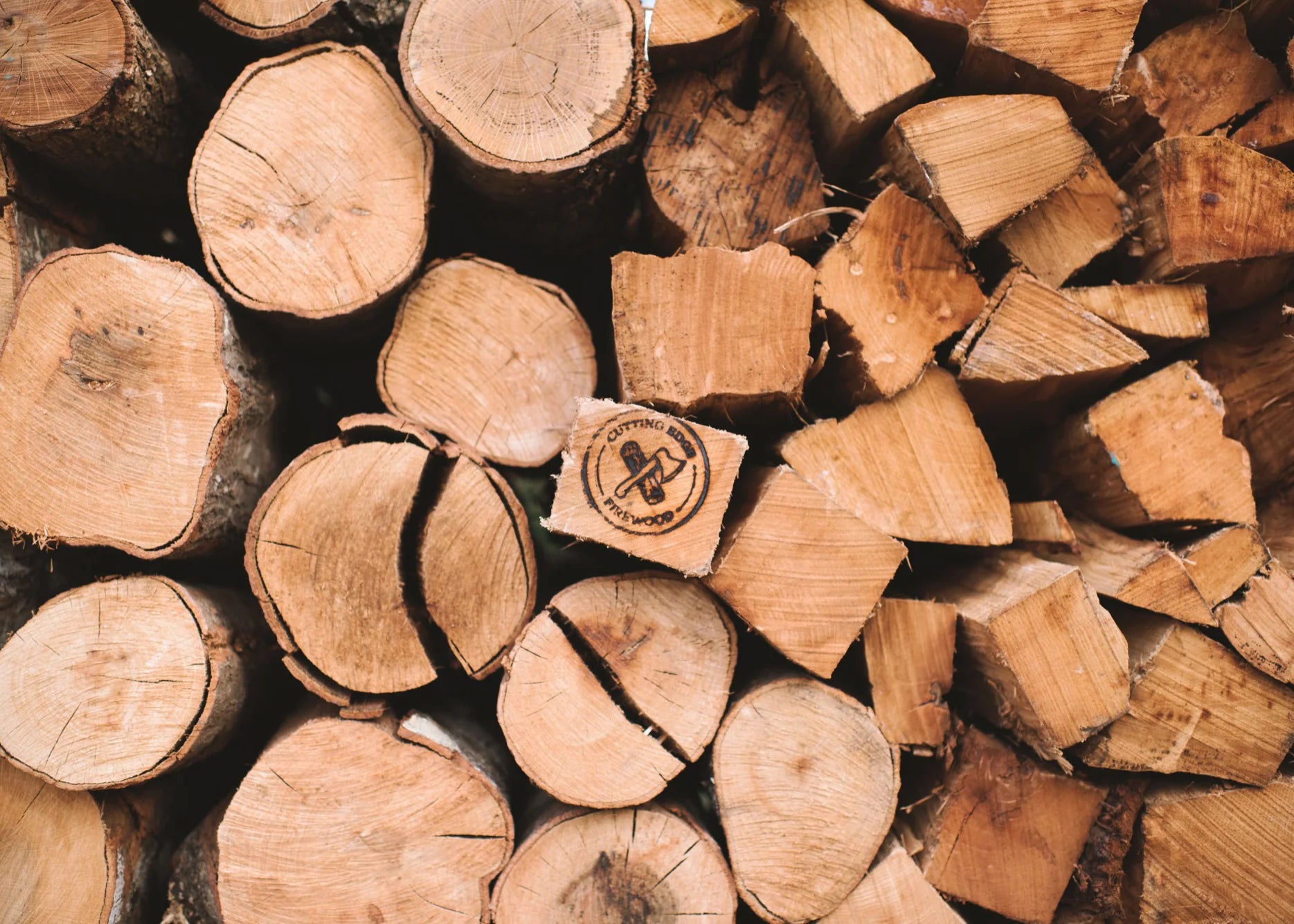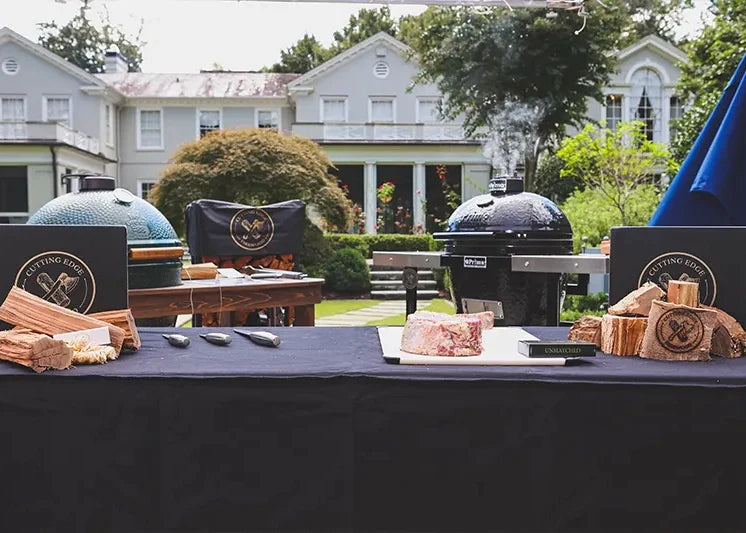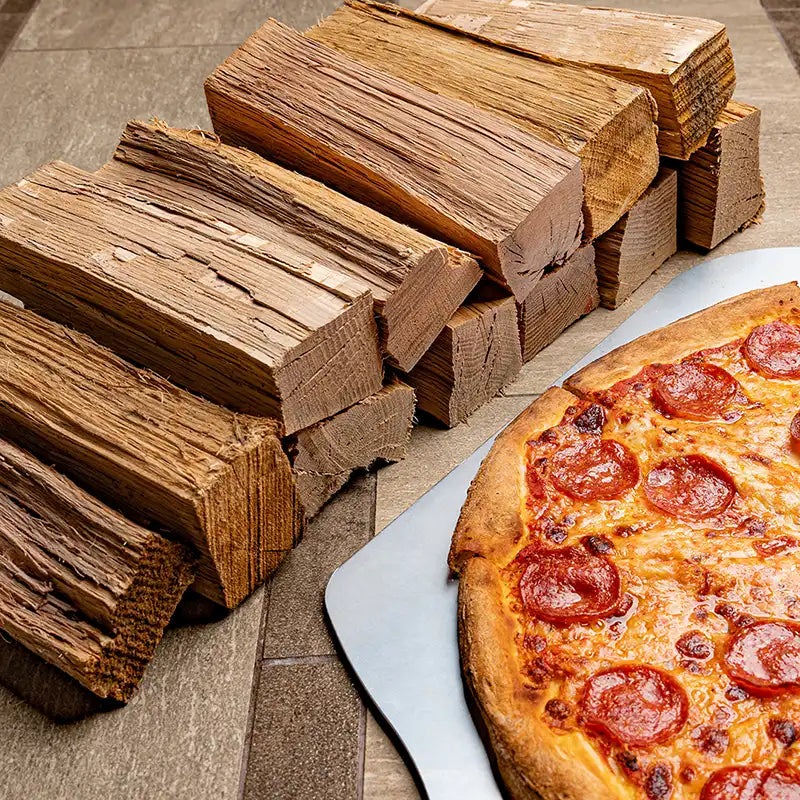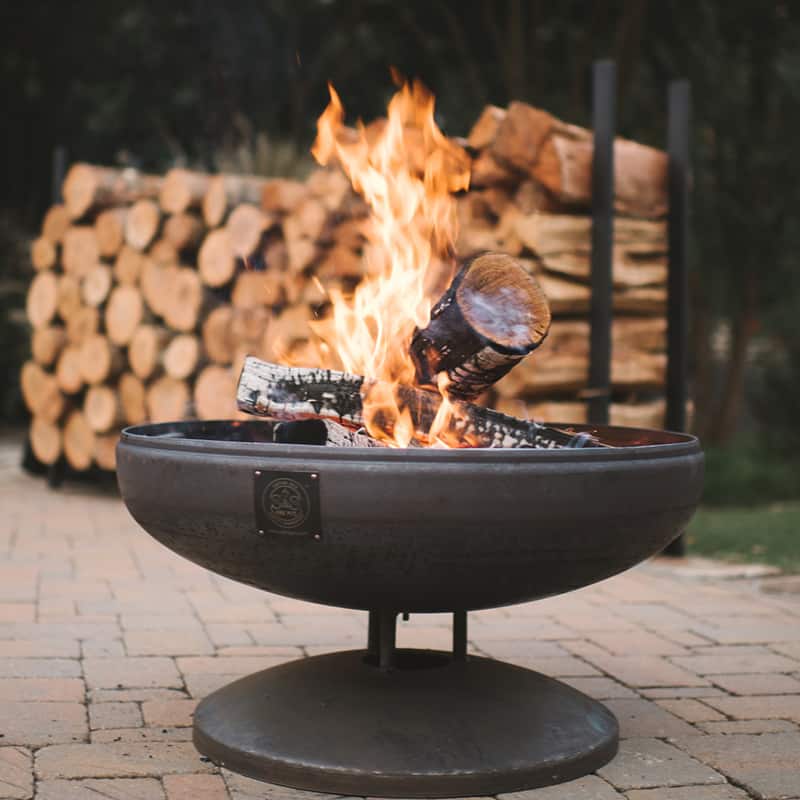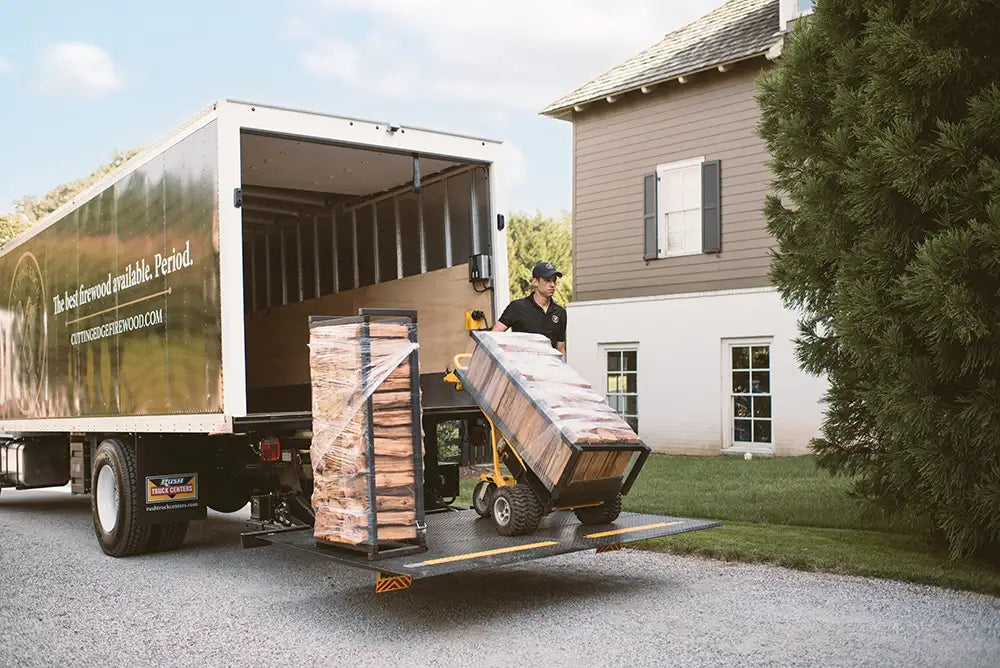There's no substitution for the radiant warmth and pleasant aroma offered by a wood fire. Gas fires pale in comparison to their wood counterparts. Whether it's natural gas or propane, it won't produce as much heat as a wood fire, nor will it produce the same pleasant aroma. While you can build fires outside your home using any type of fire ring or fire pit, you'll typically have one of two options to safely build fires inside your home: a fireplace or a wood-burning stove.
What Is a Fireplace?
A fireplace is a large ventilated structure that's designed to safely contain a fire. They are typically made of heat-resistant materials like brick or stone that can withstand fires. You add wood to the interior of the fireplace, known as the firebox, at which point you can light it to start a fire. The firebox is connected to a hollow flue that leads upwards to the chimney. Fresh air enters the firebox through the chimney and flue, while smoke escapes the firebox through the flue and chimney.
Fireplaces have been around for centuries. Their otherwise basic design allows homeowners and family members to enjoy the benefits of a wood fire inside their home. Instead of sitting around watching the TV, you can converse with family members or guests in front of your fireplace.

What Is a Wood-Burning Stove?
A wood-burning stove, on the other hand, is an appliance that's used to burn wood for the purpose of heating a home or indoor space. Like fireplaces, wood-burning stoves are designed to safely contain a fire. The primary difference between them lies in their construction. Fireplaces are constructed as a structure -- typically made of brick or stone, though sometimes metal -- whereas wood-burning stoves are devices consisting of multiple pre-fabricated components.
Wood-burning stoves consist of a firebox, a ventilation pipe and a chimney. The firebox, of course, is the main compartment in which wood is burned. The ventilation pipe is a hollow pipe that connects the firebox to the chimney. It works like the flue in a fireplace by releasing smoke and drawing fresh air. Smoke will exit the firebox through the ventilation pipe and chimney. At the same time, the firebox will draw in fresh air through the chimney and ventilation pipe.

The Benefits of a Fireplace
A fireplace can reduce your dependence on central heating to create a warm and comfortable living environment during winter. When the cold weather arrives, many homeowners resort to using a furnace or heat exchanger. With a fireplace, however, you can reduce your dependence on central heating. You build a roaring-hot fire inside your fireplace's firebox that radiates throughout your home. You may still have to turn on your furnace or heat exchanger on particularly cold winter days, but with a fireplace, you won't have to use central as frequently as you normally would.
You'll also reap the benefits of a more relaxing living environment with a fireplace. Wood fires produce a dazzling display of flames that many people find relaxing to watch. Combined with its pleasant aroma, a wood fire will create a more enjoying and relaxing environment inside your home.
It shouldn't come as a surprise to learn that fireplaces have become an increasingly popular feature in modern-day homes. According to The Washington Times, six in 10 new homes constructed in the United States have a fireplace. In comparison, only 36% of homes built in the 1970s have a fireplace. Based on these statistics, you can rest assured knowing that fireplaces are a popular feature in modern-day homes.
Not only are they are popular, but fireplaces can increase the value of a home. Research shows that homes with a fireplace sell for a higher price than those without a fireplace. An infographic published by Angie's List suggests that fireplaces increase the value of a typical home by an average of $1,000 to $4,999. Maybe it's because they save money on central heating costs, or perhaps it's because they promote a more relaxing living environment. Regardless, homes with a fireplace typically sell for a higher price than those without a fireplace.
The Benefits of a Wood-Burning Stove
Wood-burning stoves aren't as popular as fireplaces, but that doesn't necessarily mean they aren't effective. Like a fireplace, a wood-burning stove can help warm your home during the otherwise cold winter months. Wood-burning stoves, in fact, are actually more efficient at converting wood to heat than fireplaces. Wood-stoves approved by the U.S. Environmental Protection Agency (EPA) have an average efficiency of about 70%. What does this mean exactly? It means wood-burning stoves convert roughly 70% of the wood's organic matter to heat. To put that number into perspective, fireplaces have an average efficiency of about 20% to 25%. Therefore, wood-burning stoves are up to three times more efficient than fireplaces.
The high efficiency of wood-burning stoves can be attributed to their design. They are smaller and more compact than fireplaces, allowing them to project more heat into your home. Fireplaces often lose a substantial amount of heat where the firebox connects to the flue. With their smaller firebox, as well as the use of a ventilation pipe rather than a flue, wood-burning stoves are more efficient at producing heat.
You can further increase the heating power of a wood-burning stove by using the right type of firewood. Available for sale here at Cutting Edge Firewood, our signature chiminea wood stove firewood is the perfect fuel for a wood-burning stove. Wood-burning stoves have smaller fireboxes than fireplaces. As a result, they may not accommodate standard-size wood logs. Our chiminea wood stove firewood features an assortment of compact wood logs, making them ideal for a wood-burning stove. You can use chiminea wood stove firewood in a fireplace as well, but its small and compact size makes it the perfect choice for a wood-burning stove.
A wood stove will provide the same relaxing atmosphere as a fireplace. You can position your sofas, chairs and other living room furniture around your wood-burning stove. During the evenings, this will allow you and your family to relax in front of a memorizing wood fire.
When compared to fireplaces, most homeowners will agree that wood-burning stoves are easier to maintain. Since wood-burning stoves have a ventilation pipe rather than a flue, they require less work to maintain. With that said, you should still have both your wood-burning stove, as well as the chimney, professionally inspected at least once a year.
Which One Is Best?
You can't go wrong with either a fireplace or wood-burning stove. While they offer their own unique benefits, they will both allow you to build roaring-hot fires inside your home. Just remember to use the right type of firewood.
Wood-burning stoves and fireplaces require high-quality firewood. Wet or damp wood, as well as softwood varieties of firewood, won't cut it. Whether you have a wood-burning stove or a fireplace, you need to use high-quality kiln dried firewood. Doing so will allow you to build hotter, cleaner fires inside your home.
Experience the difference kiln dried firewood makes in your fireplace or wood-burning stove by visiting our firewood for sale today. Cutting Edge Firewood is the Southeast's premier vendor of high-quality kiln-dried firewood. We offer a variety of the industry's finest firewood, including oak, hickory, cherry and more, all of which you can use in your fireplace or wood-burning stove.

